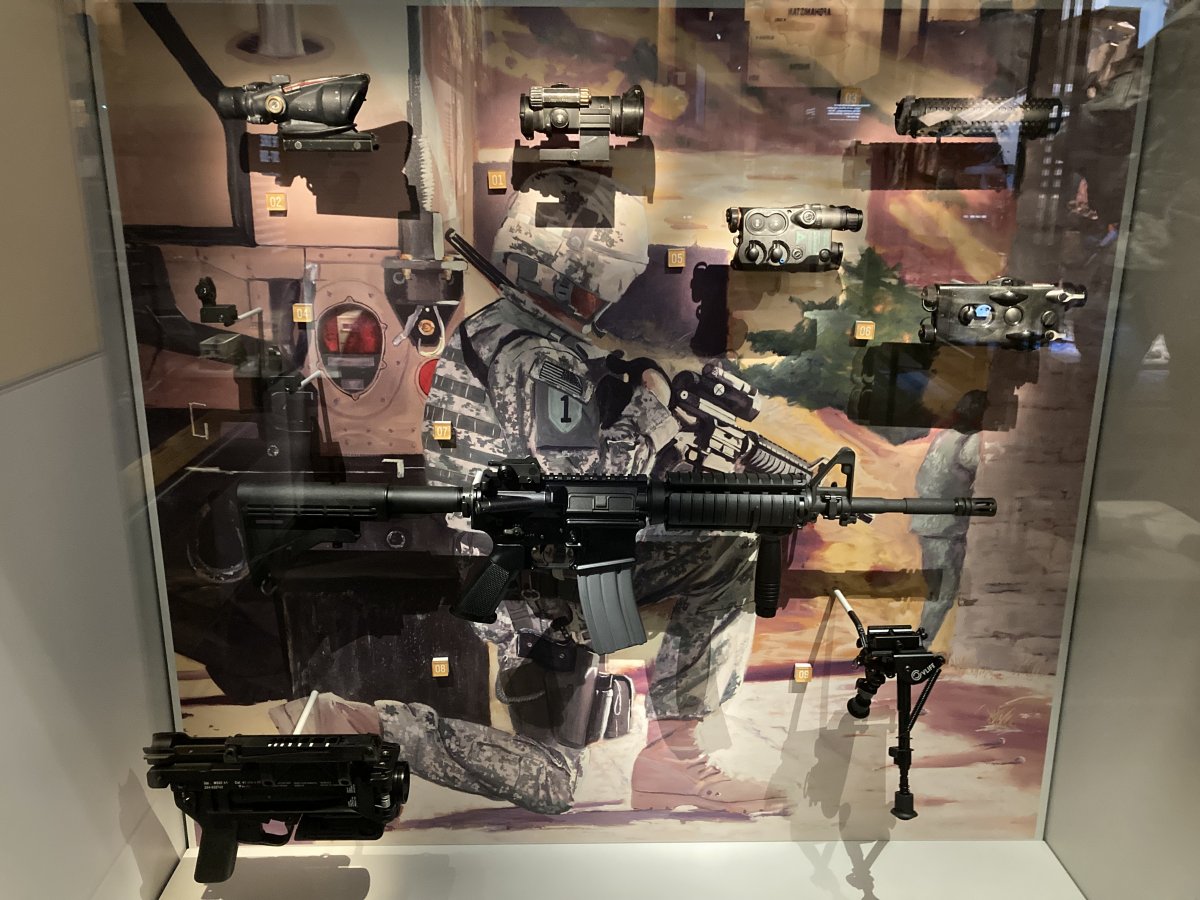June 29, 2022 - National Museum of the Army
Today I drove down to Fort Belvoir, Virginia to visit the National Museum of the U.S. Army. It's relatively new, opening on November 11, 2020.
The museum was excellent, with state-of-the-art presentation of artifacts, videos, dioramas and exhibits.
The actual museum is in the building to the left. The center part is the entrance and lobby. I'm not sure what is in the tall building to the right. Offices? I think the second floor might be used for special exhibits, although none were open today.


Looking down at the main entrance lobby. All the exihibits are on one side of the building, at the end of that hallway pictured below.

Before the truck, there was the Army mule. The U.S. Army's prime mover, a carefully loaded pack mule could carry up to 400 pounds. A six-mule army wagon could move 2,500 pounds of cargo. And a mule needed less food and forage than a horse.
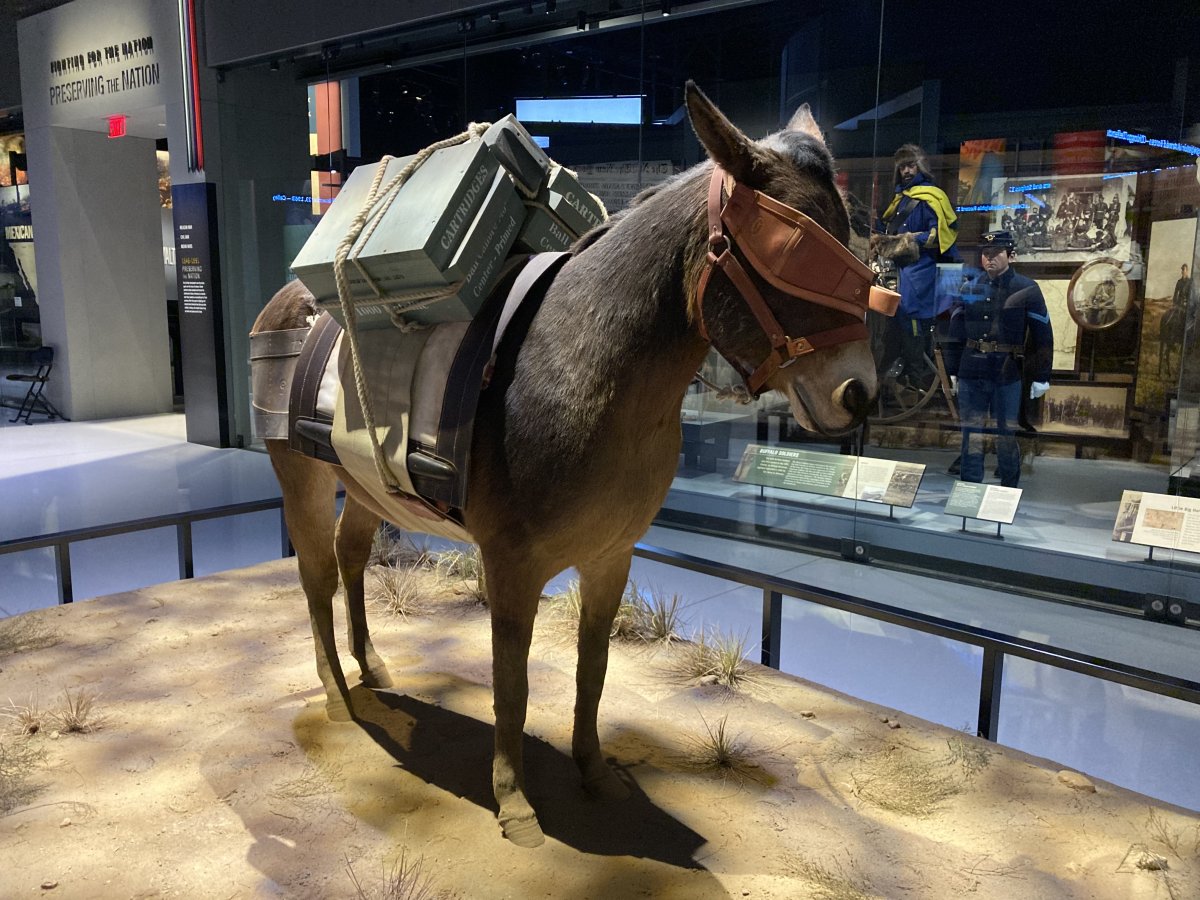
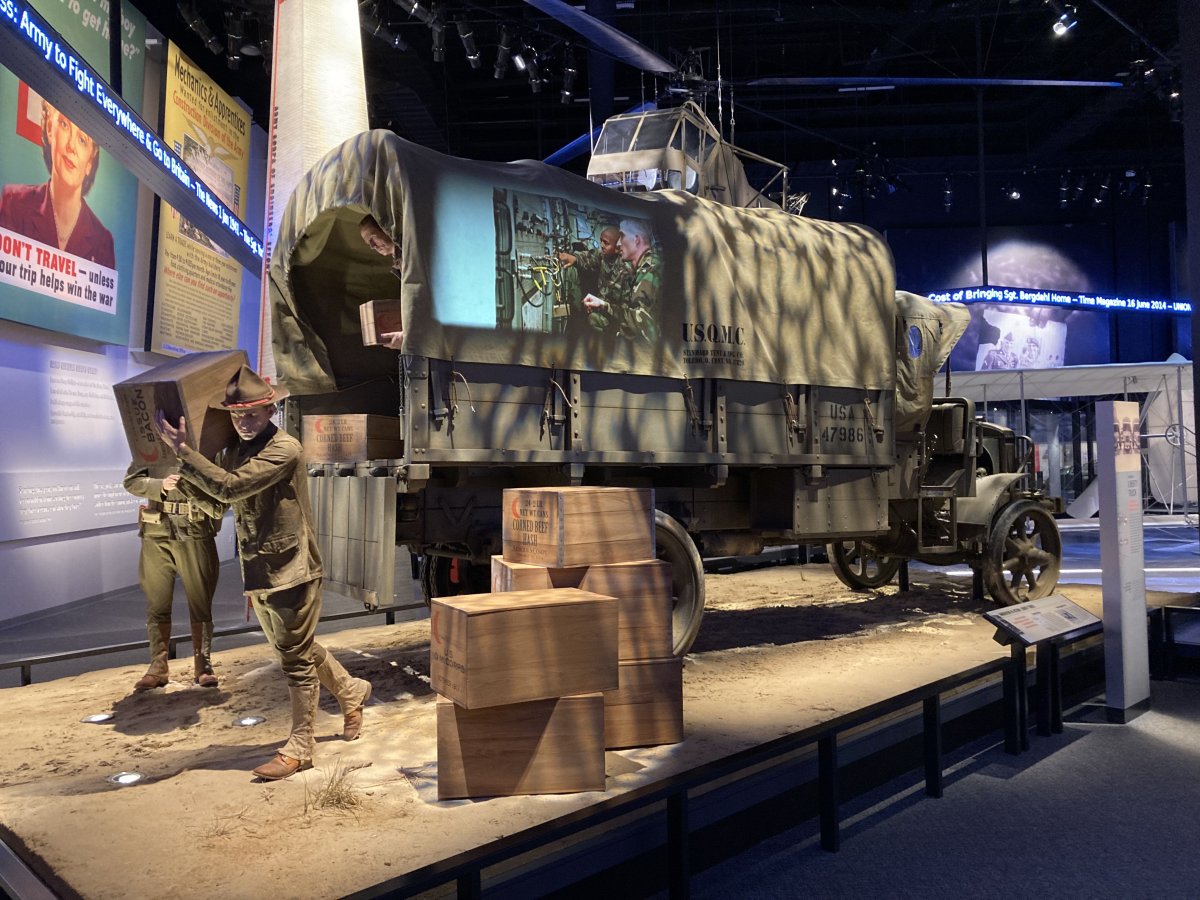
The Sikorsky R-4 was the U.S. Army's first service helicopter. The Army bought 30 of them in 1942.
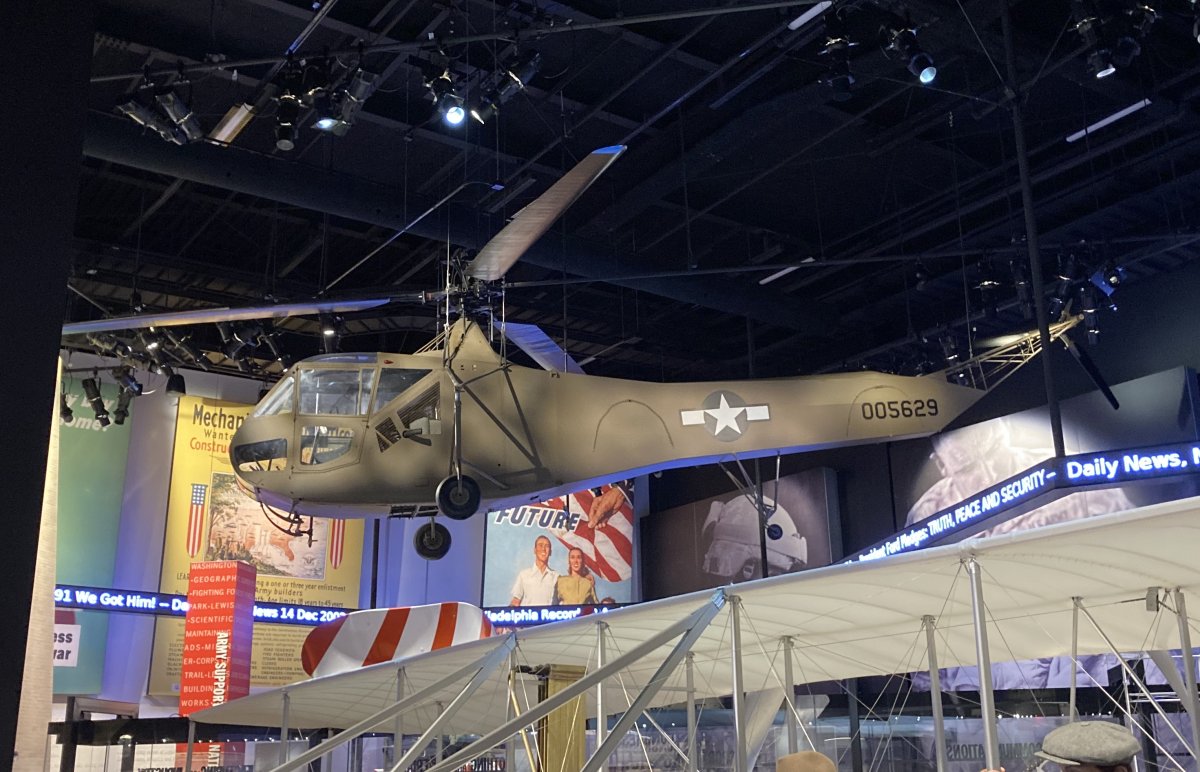
Here 1st Lt. Thomas E. Selfridge and Orville Wright discuss the 1908 Wright Flyer which was at Fort Myer, Virginia for demonstrations. The Army ended up buying a Wright Flyer for $30,000.
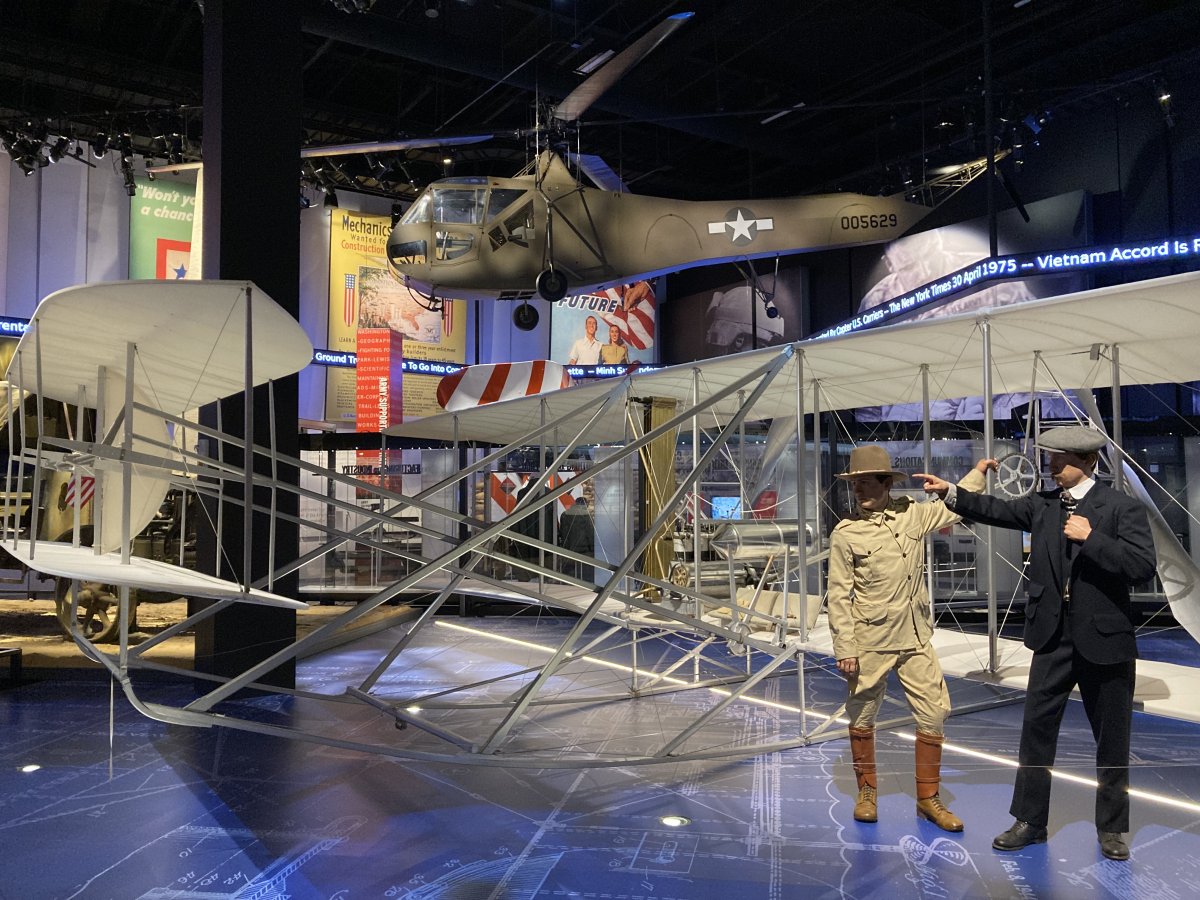
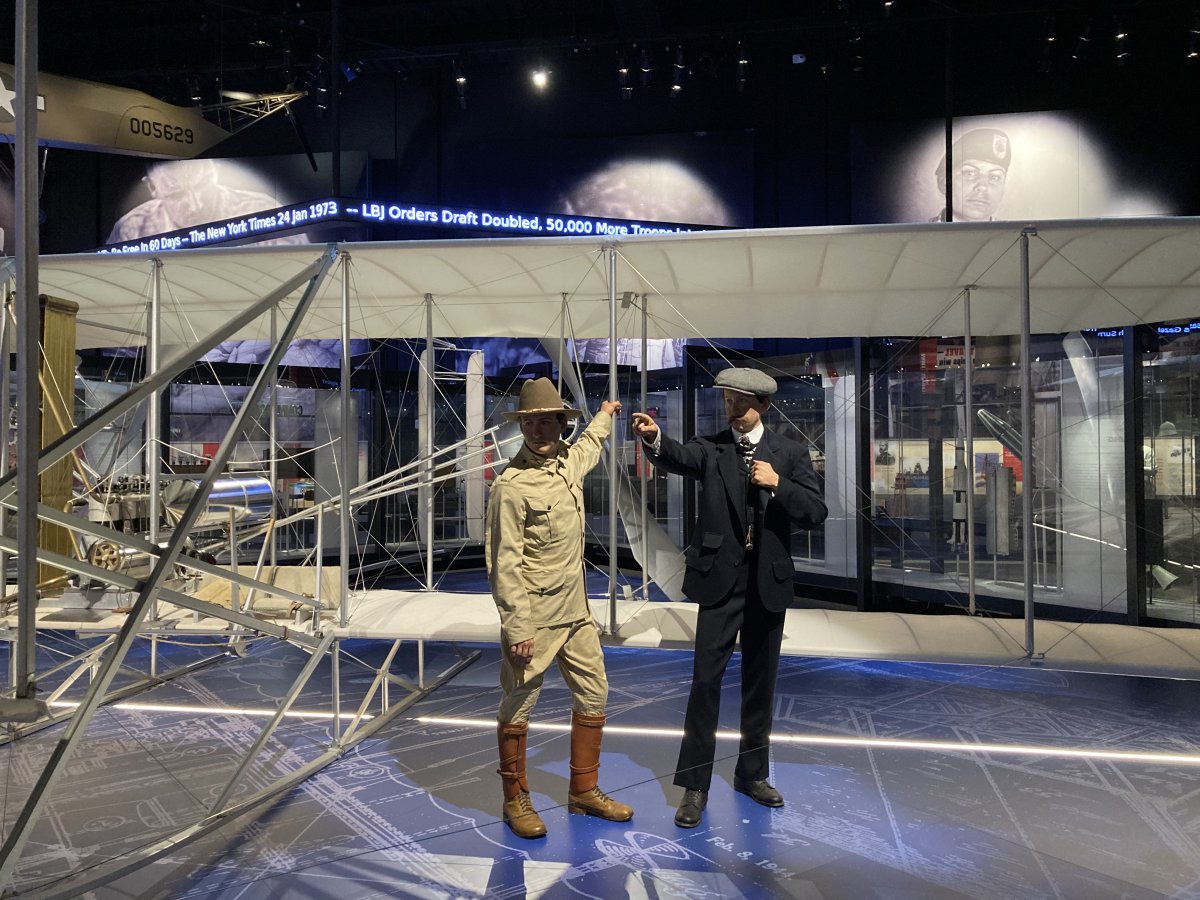
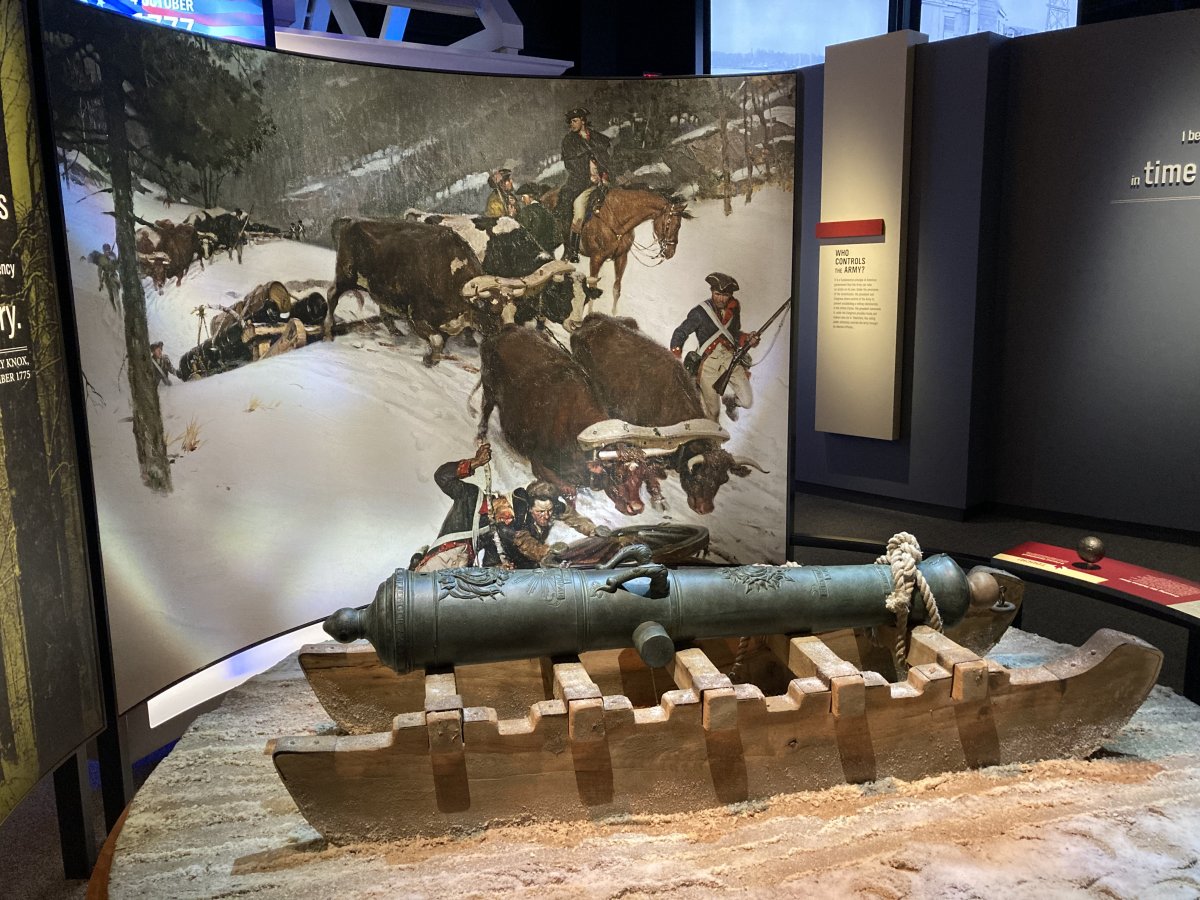
A diorama showing Knox's caravan crossing the Hudson River.
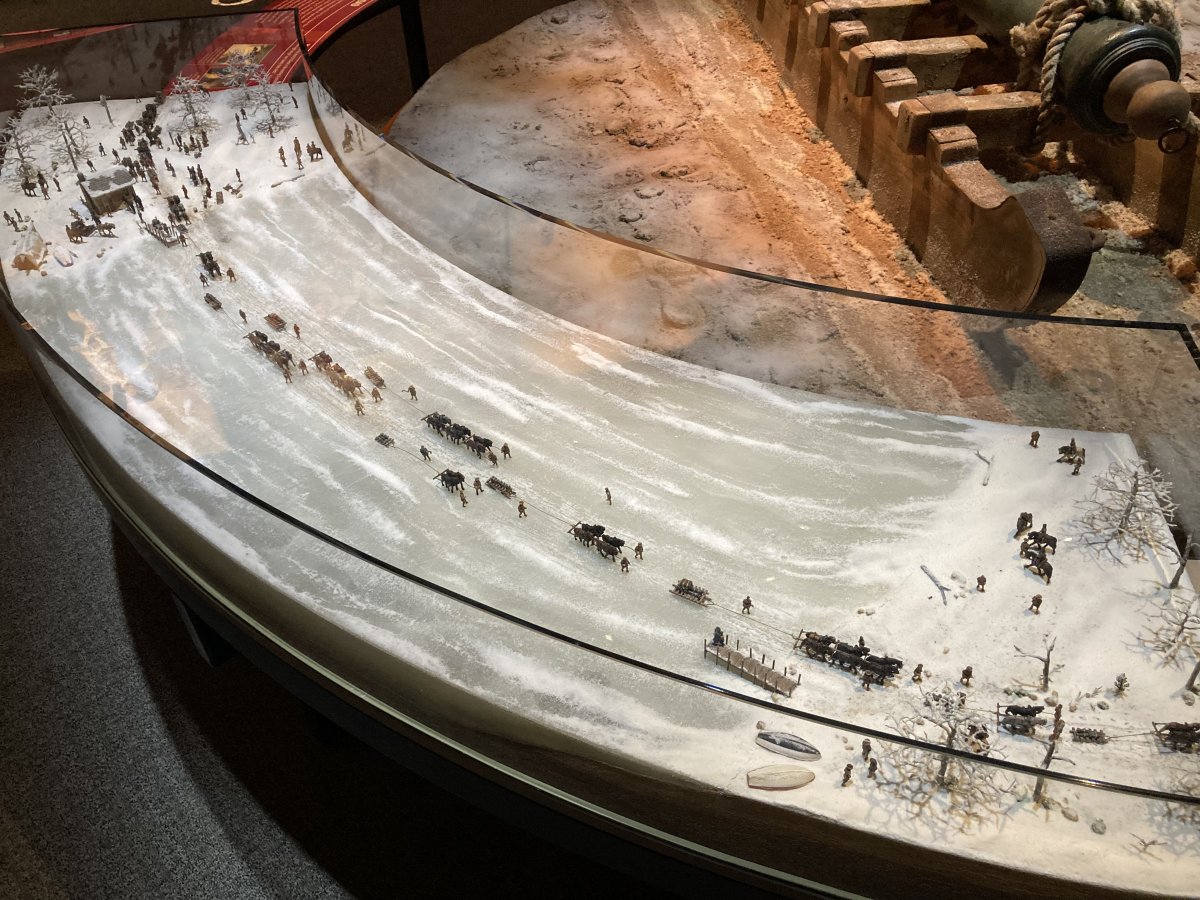
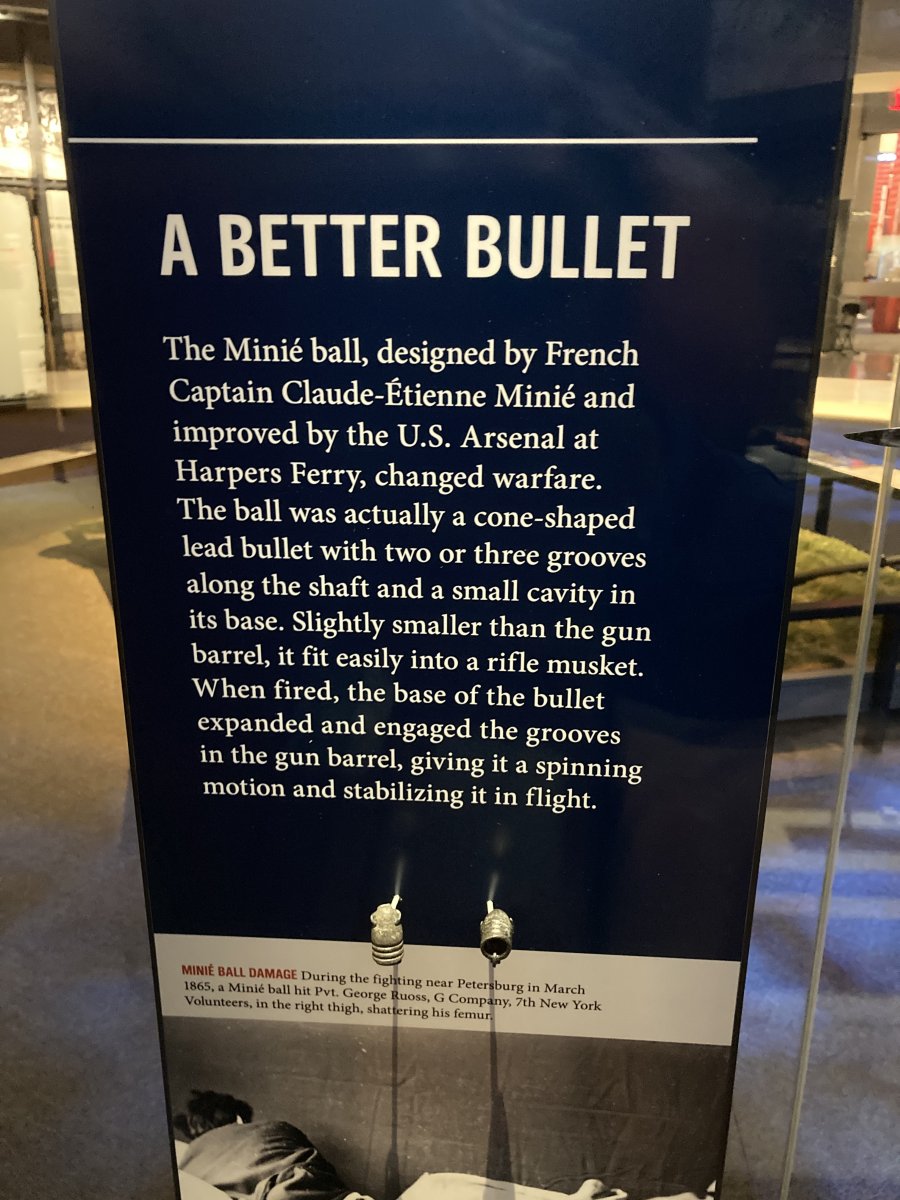
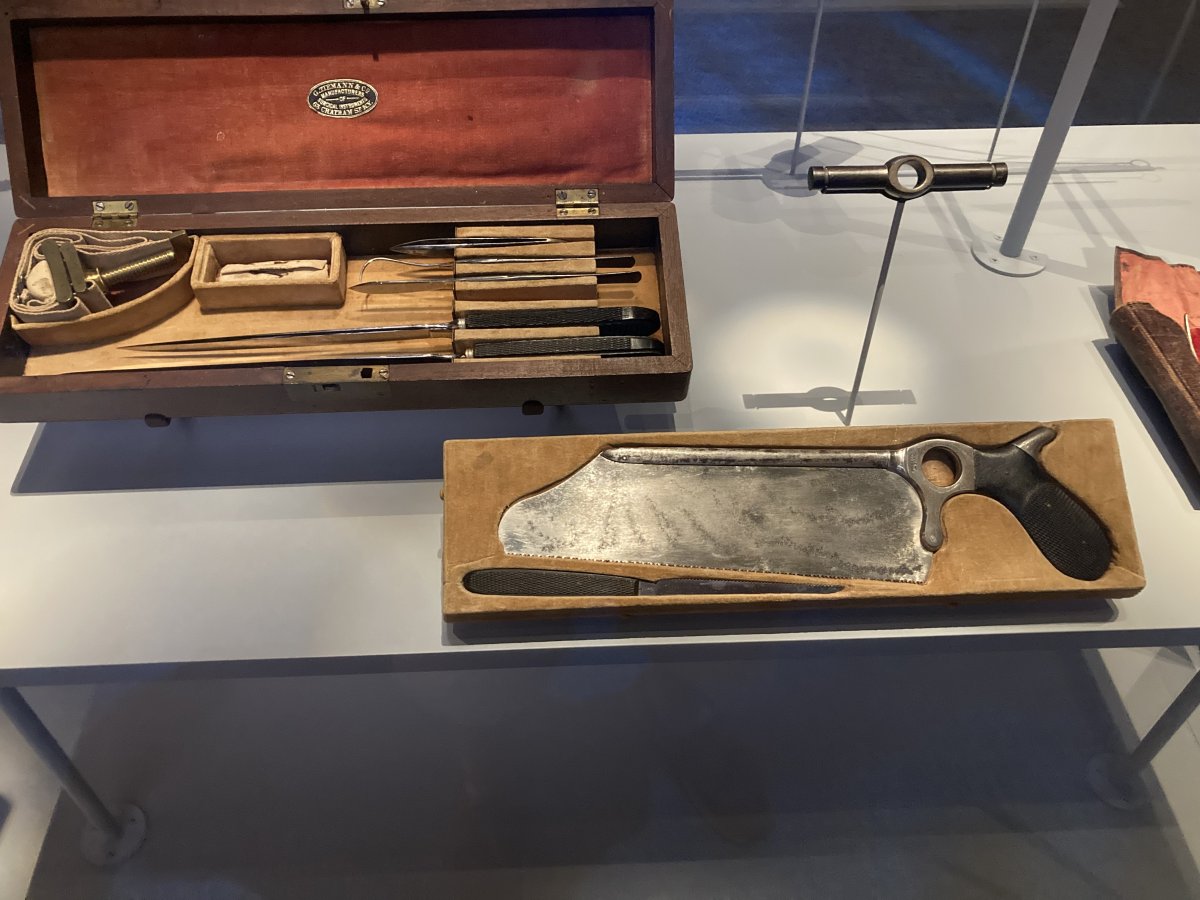
American Doughboys in World War One.
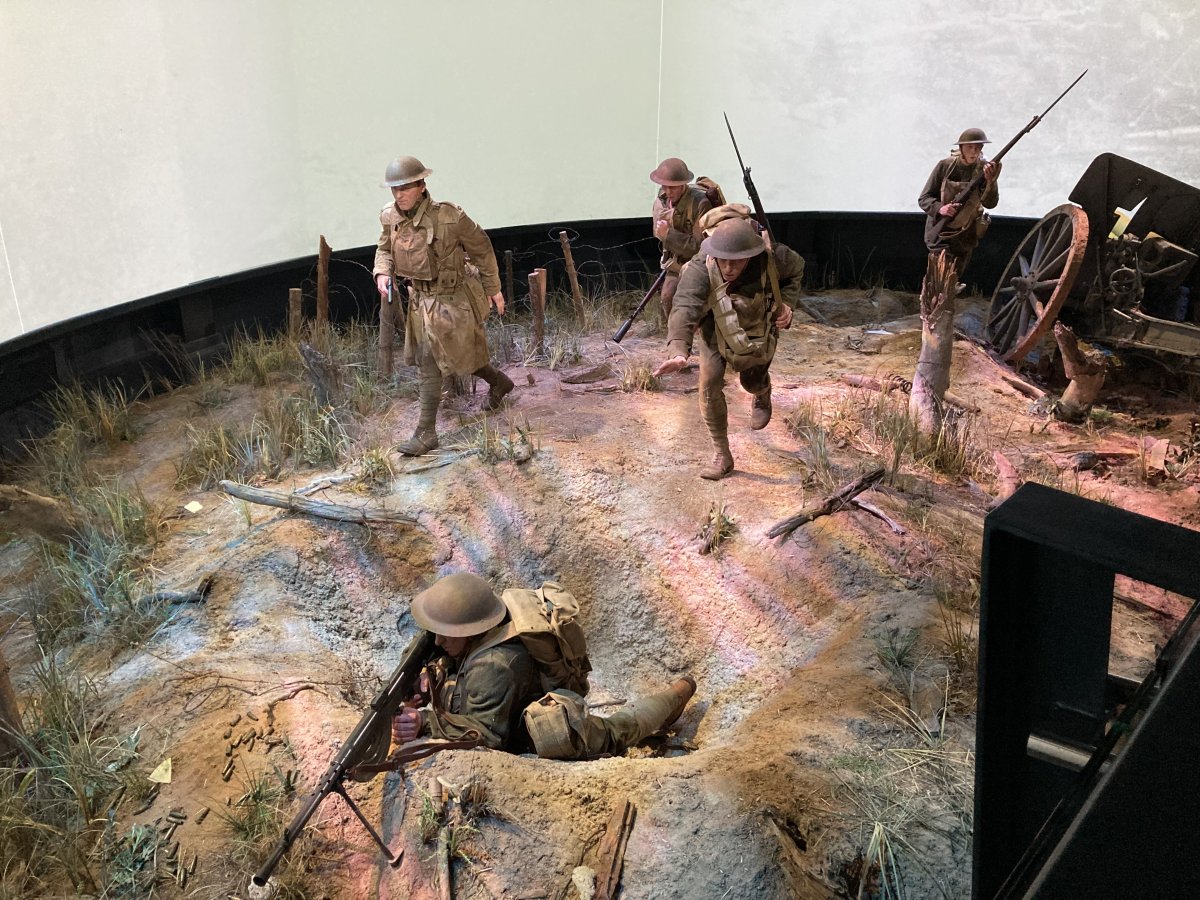
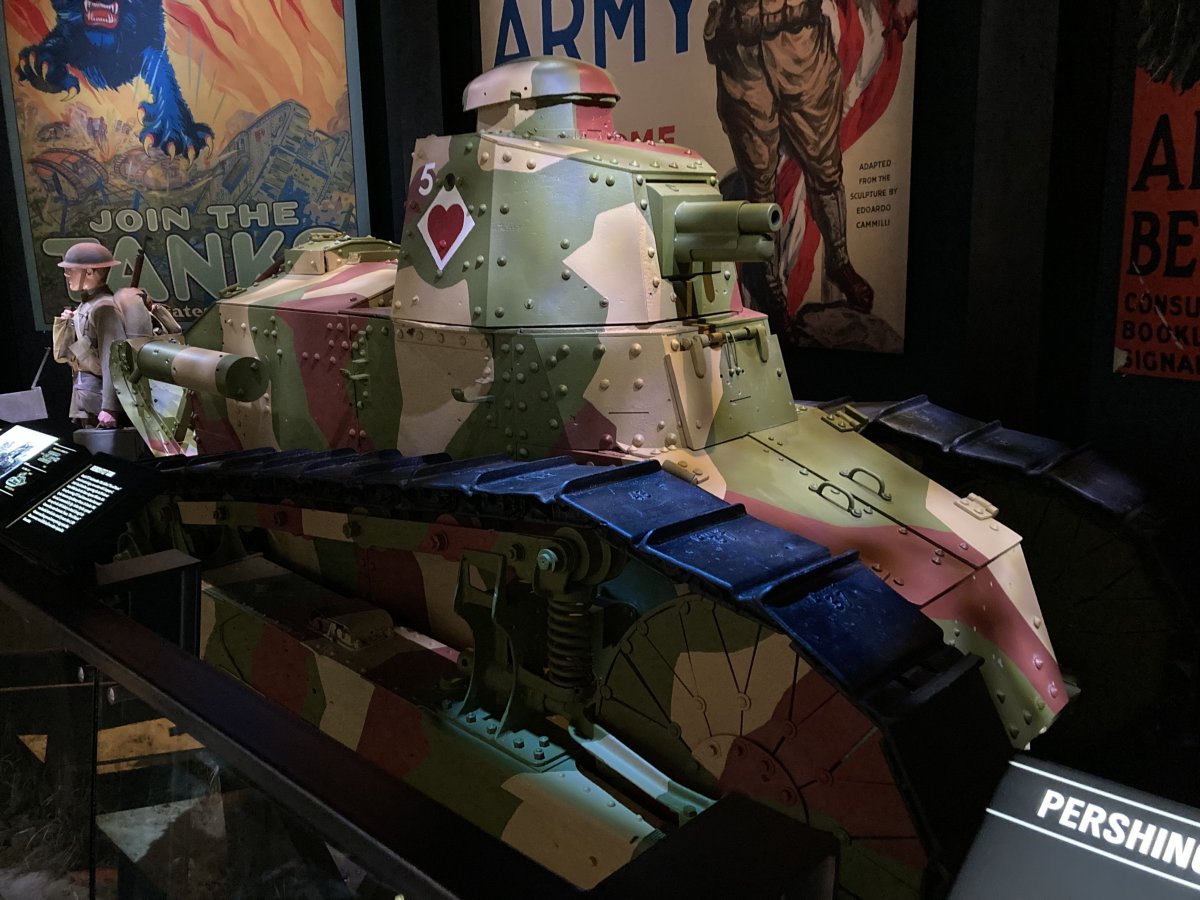
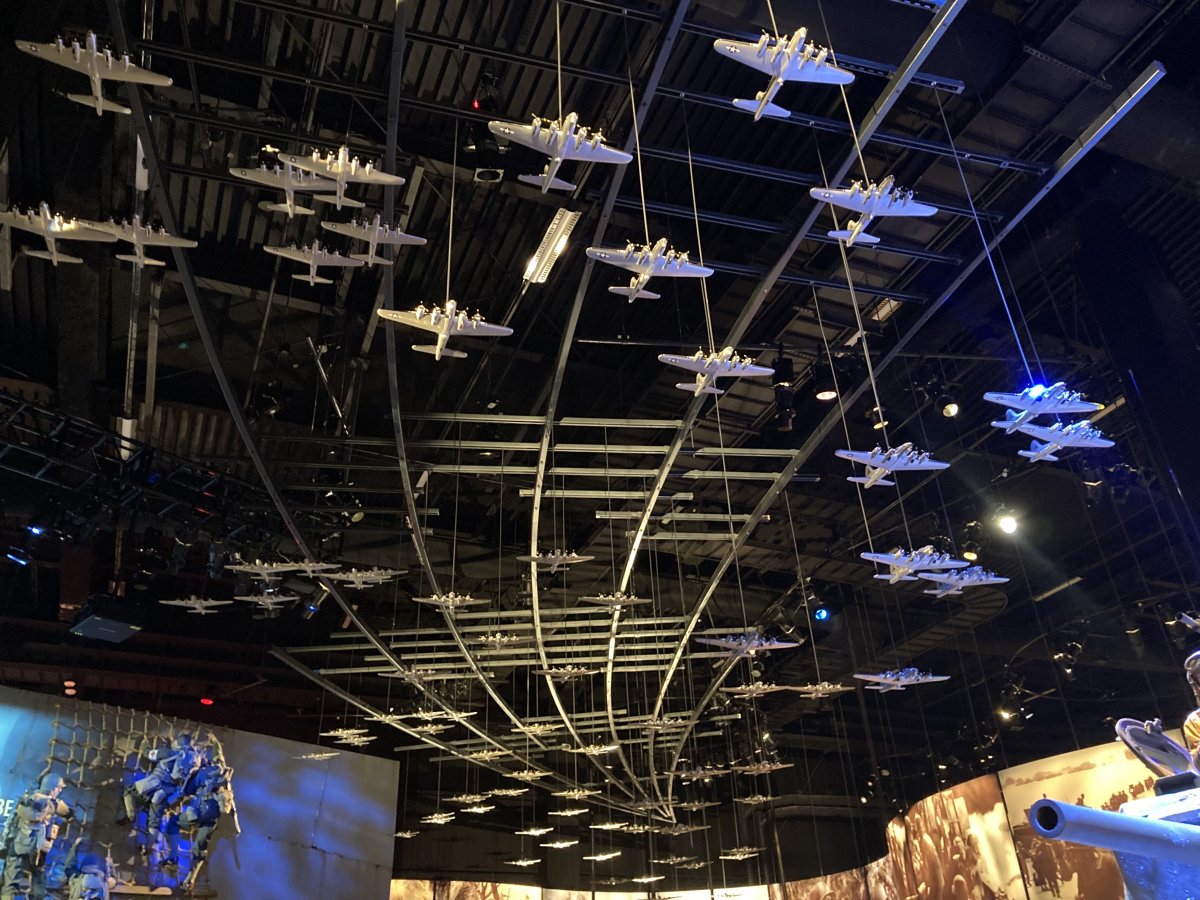
Army soldiers climb down a ship into a Higgins Boat for transit to the beach.
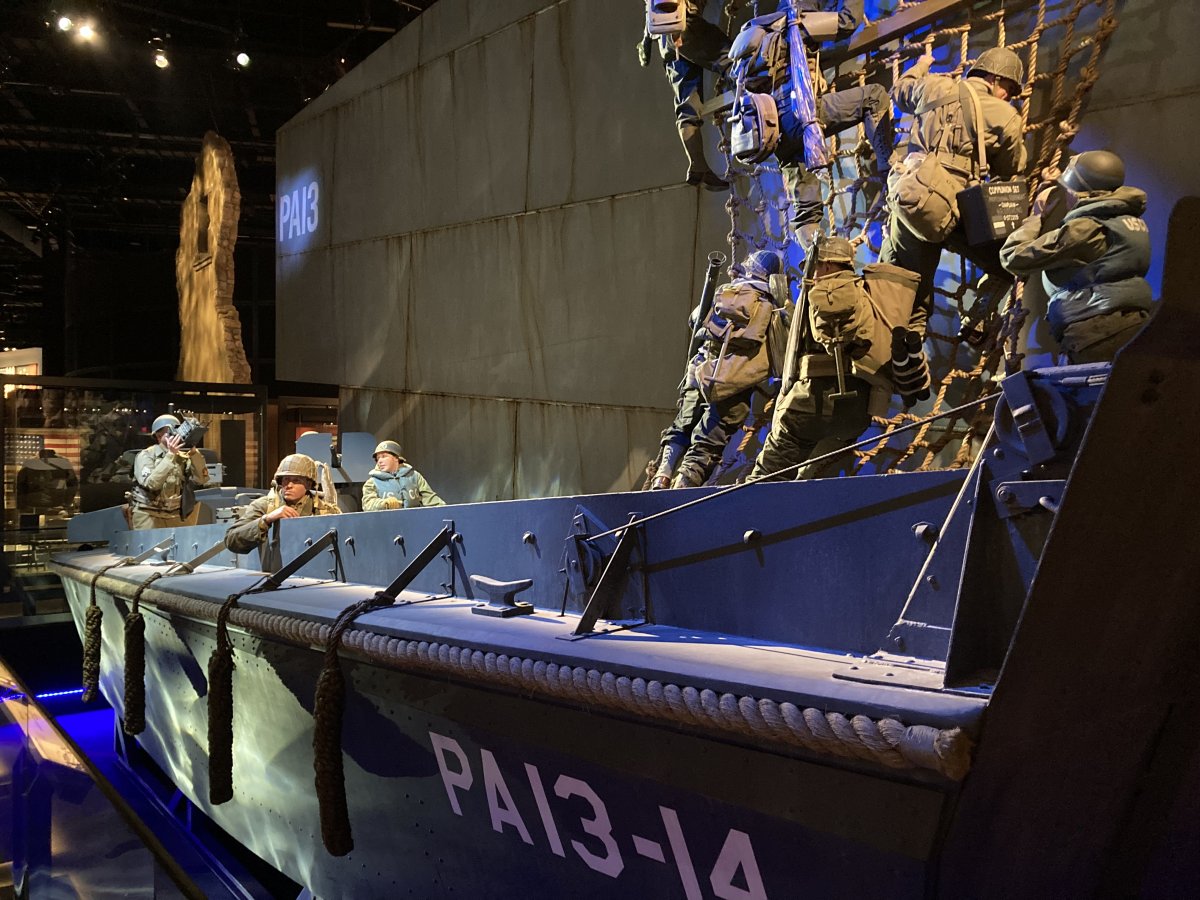
Sherman tank "Cobra King" of the 4th Armored Division links up with encircled defenders of the 101st Airborne Division in Bastogne during World War II.
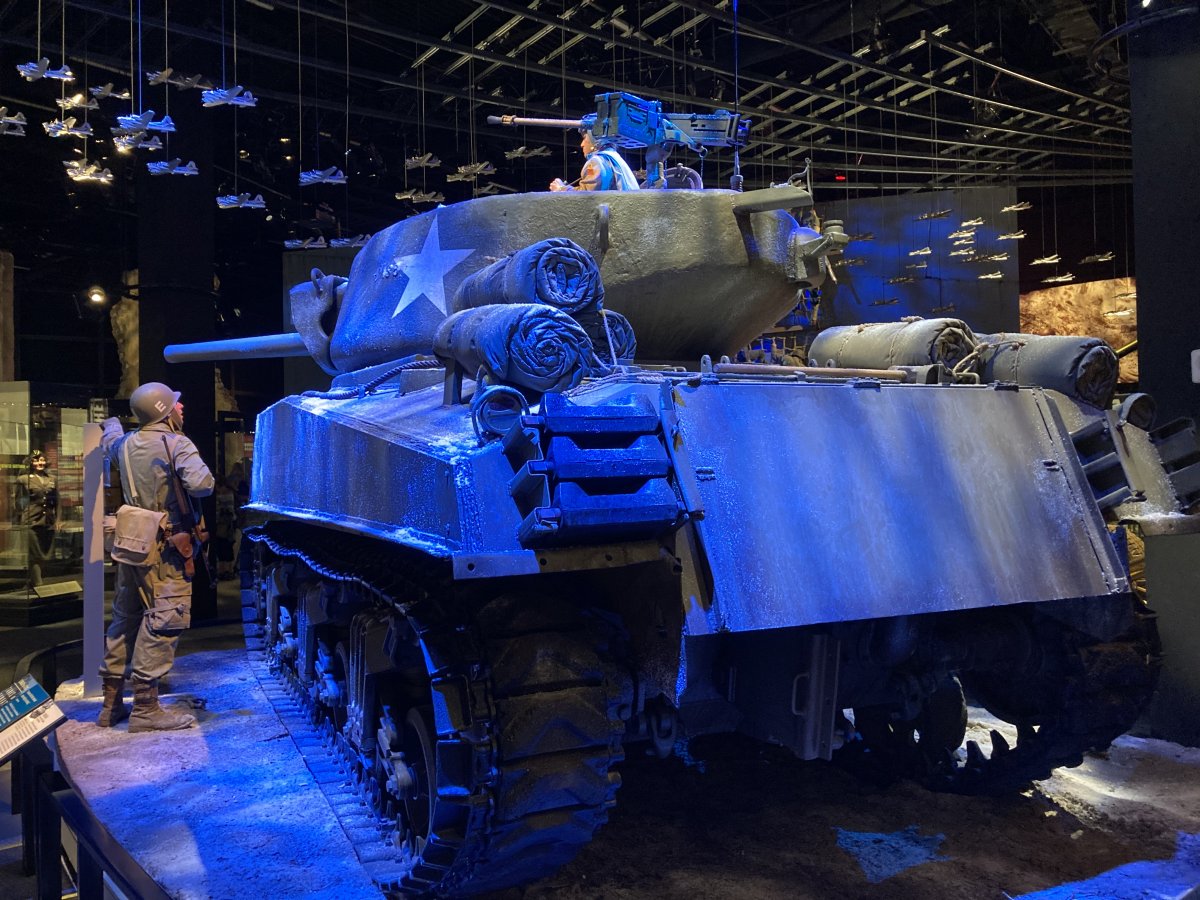
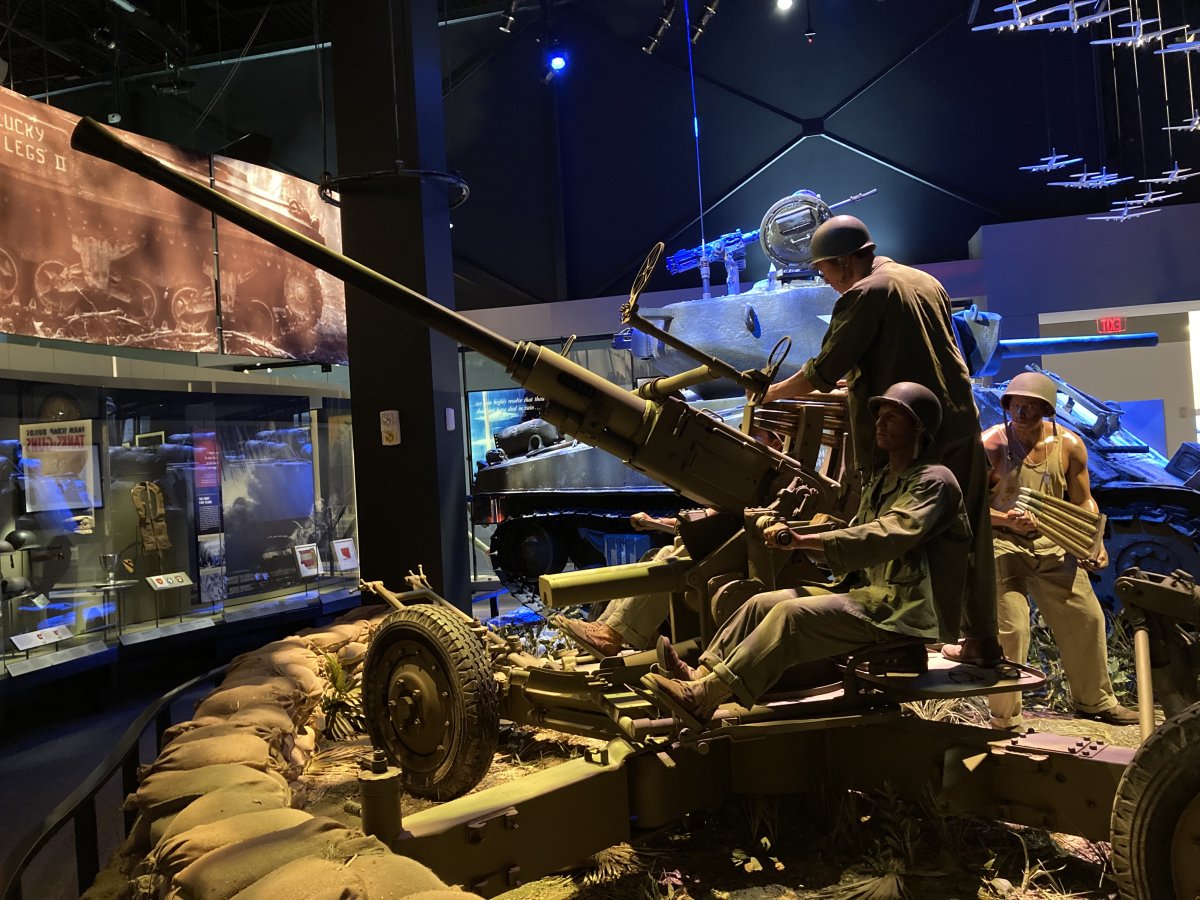
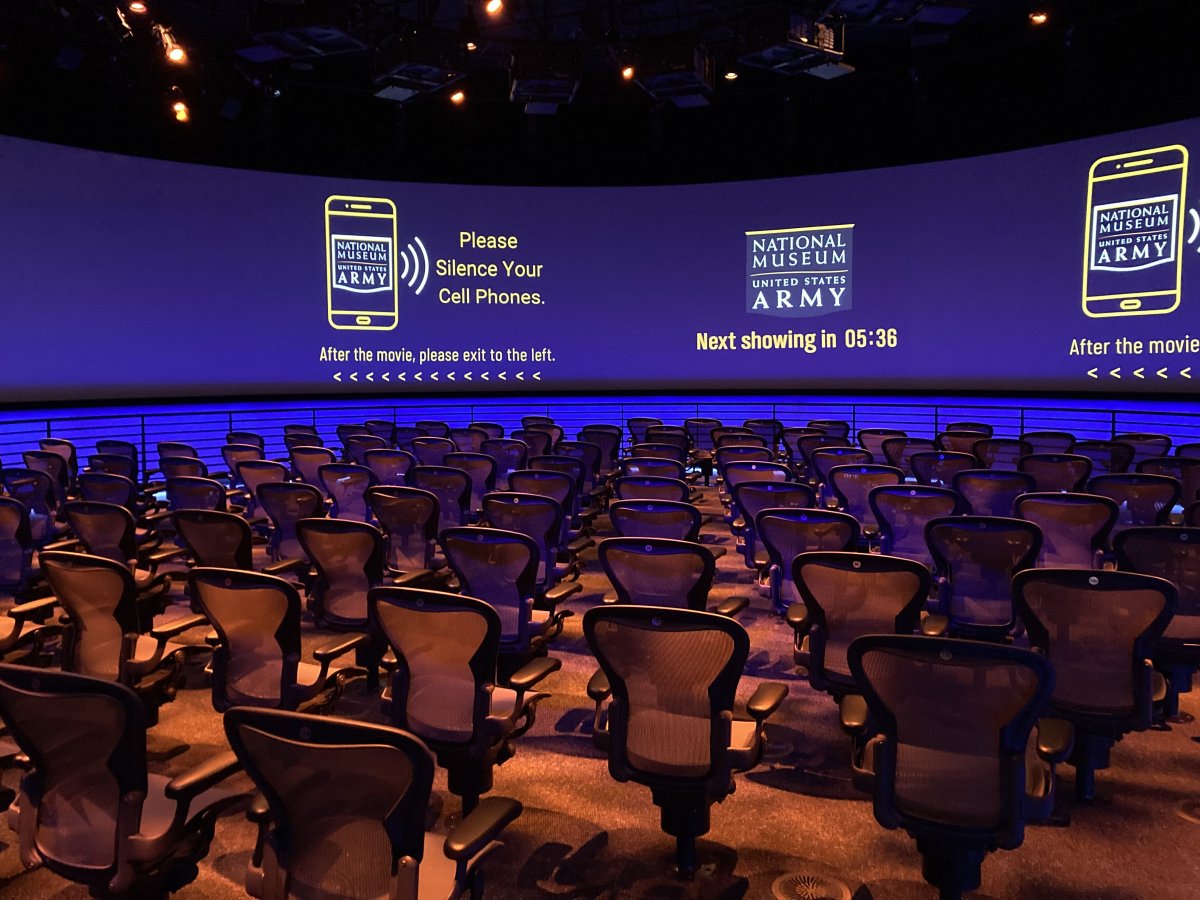
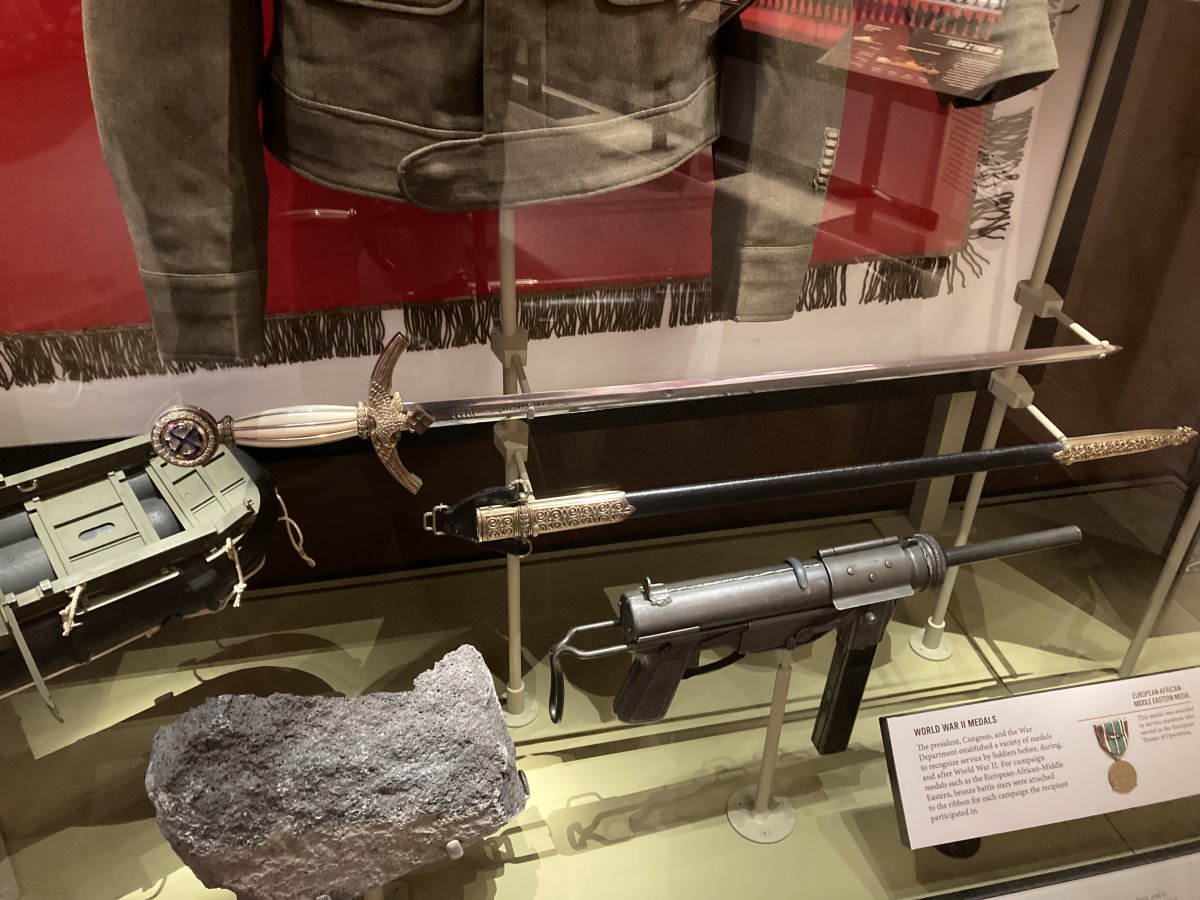
During World War Two, two mainstays of the G.I. were the M1 Carbine (top) and the M1 Garand Rifle (bottom).
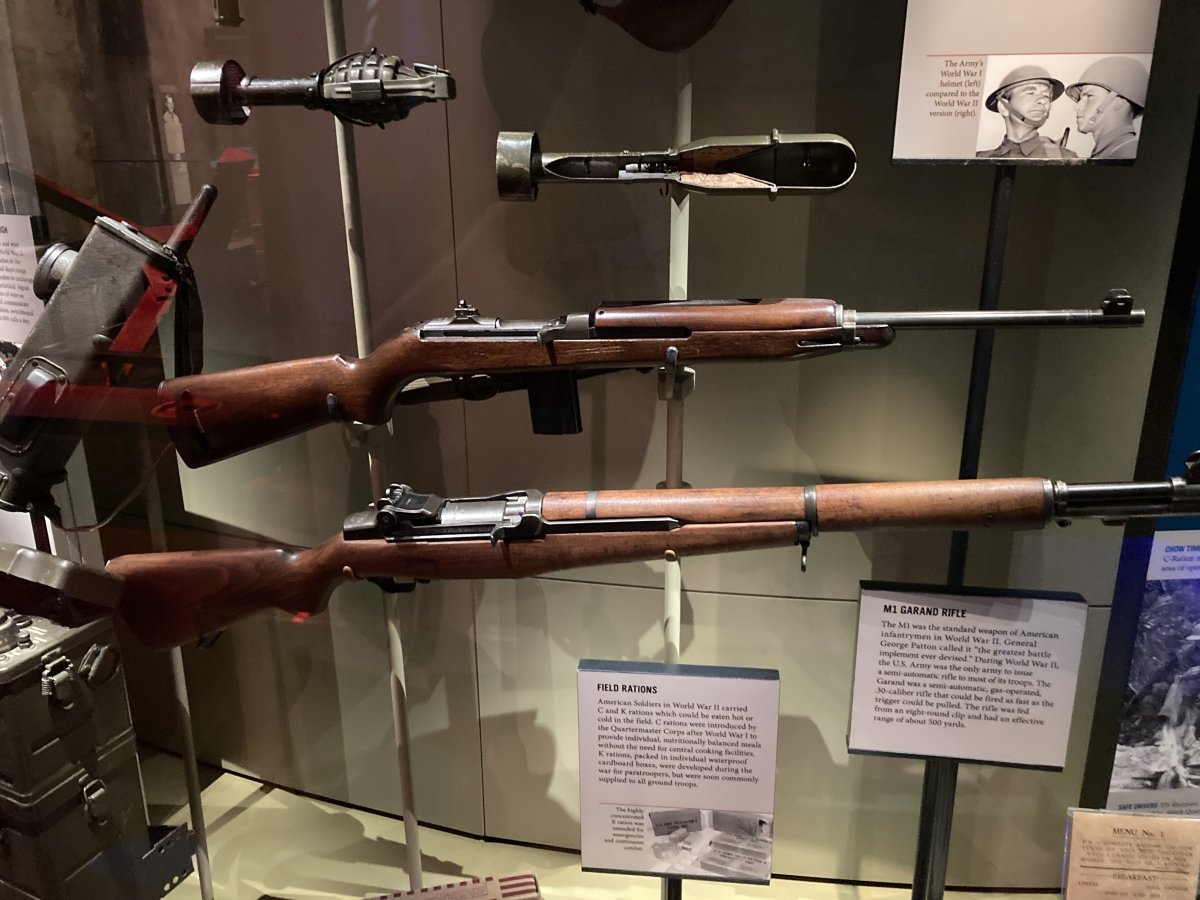
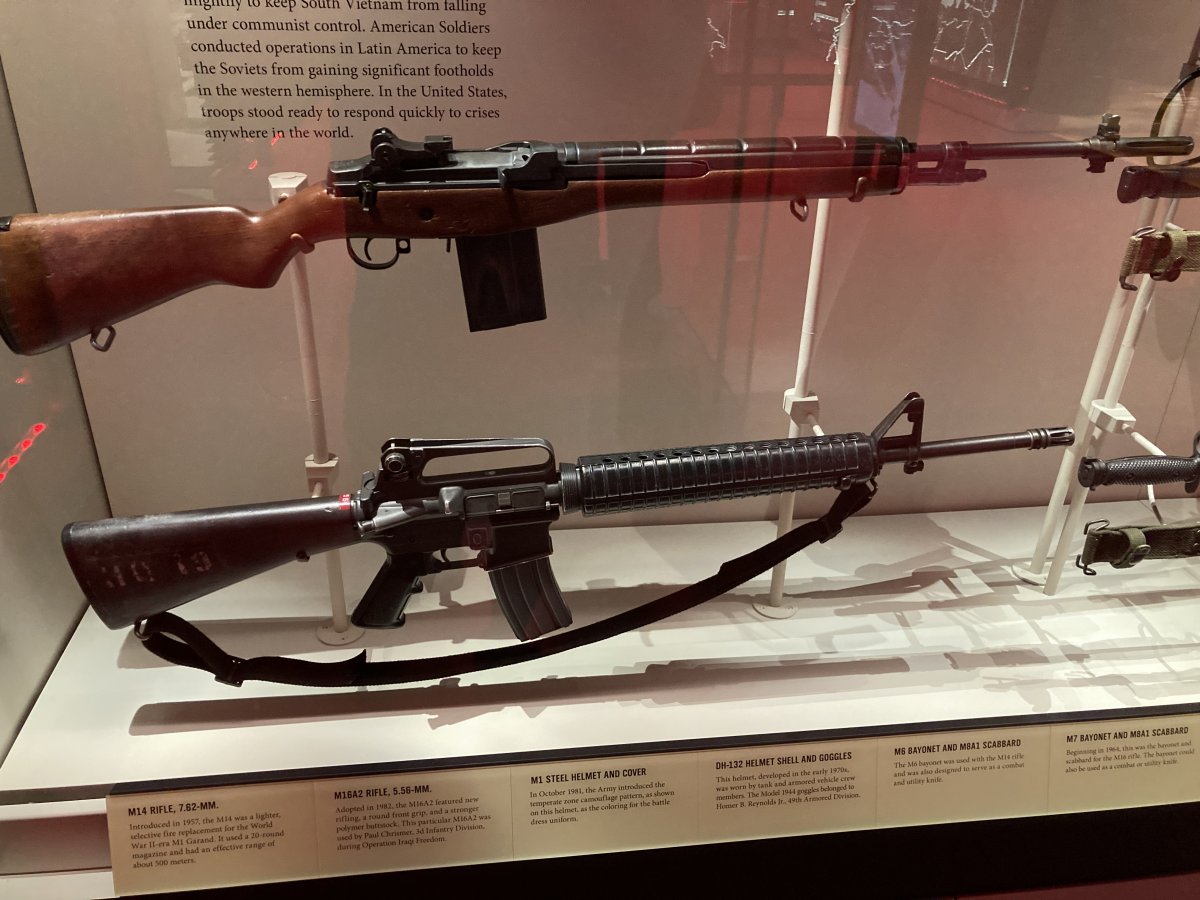
It's easy to forget, or never even know, how real the threat was of a Soviet Bloc invasion of western Europe was during the Cold War. This interesting map shows how the NATO forces were deployed to meet the threat.
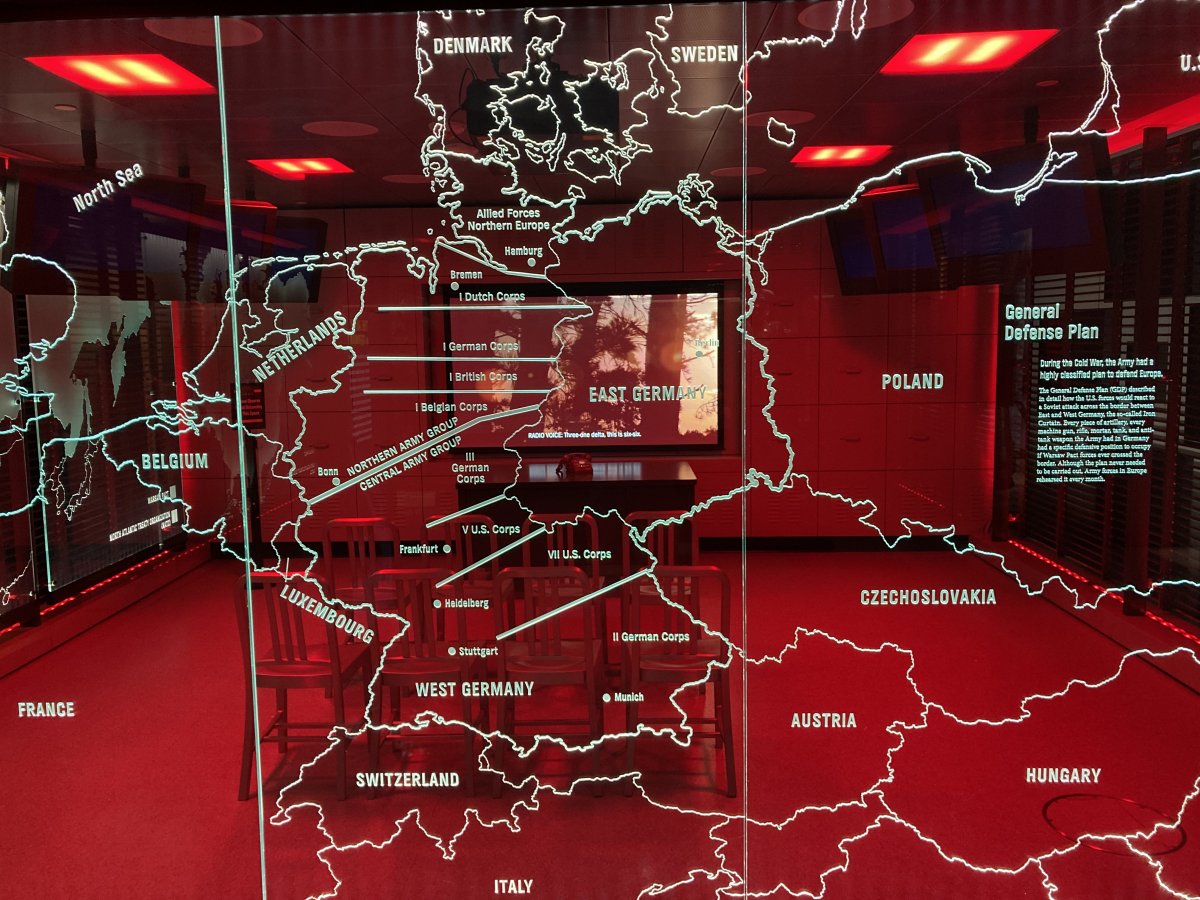
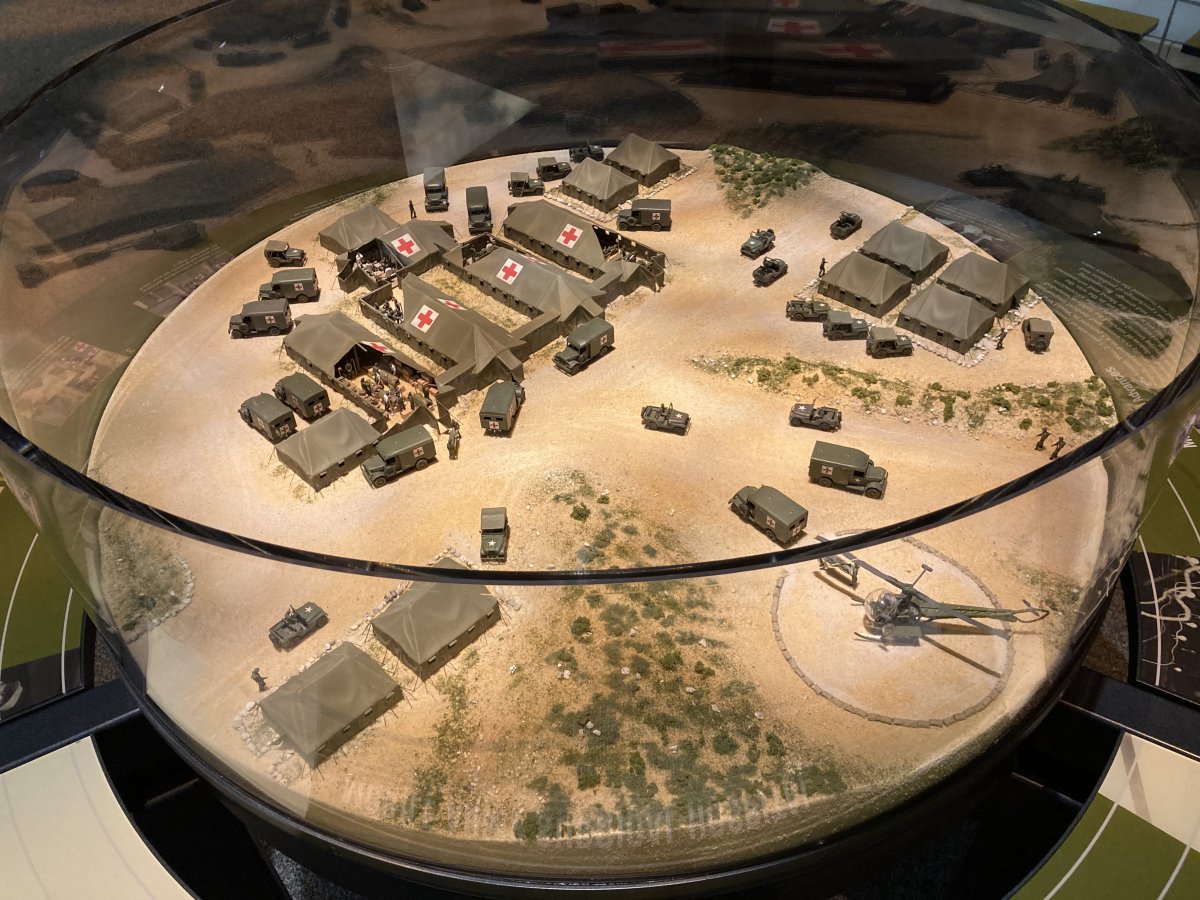
An excellent map showing the ground war in Operation Desert Storm in 1991.
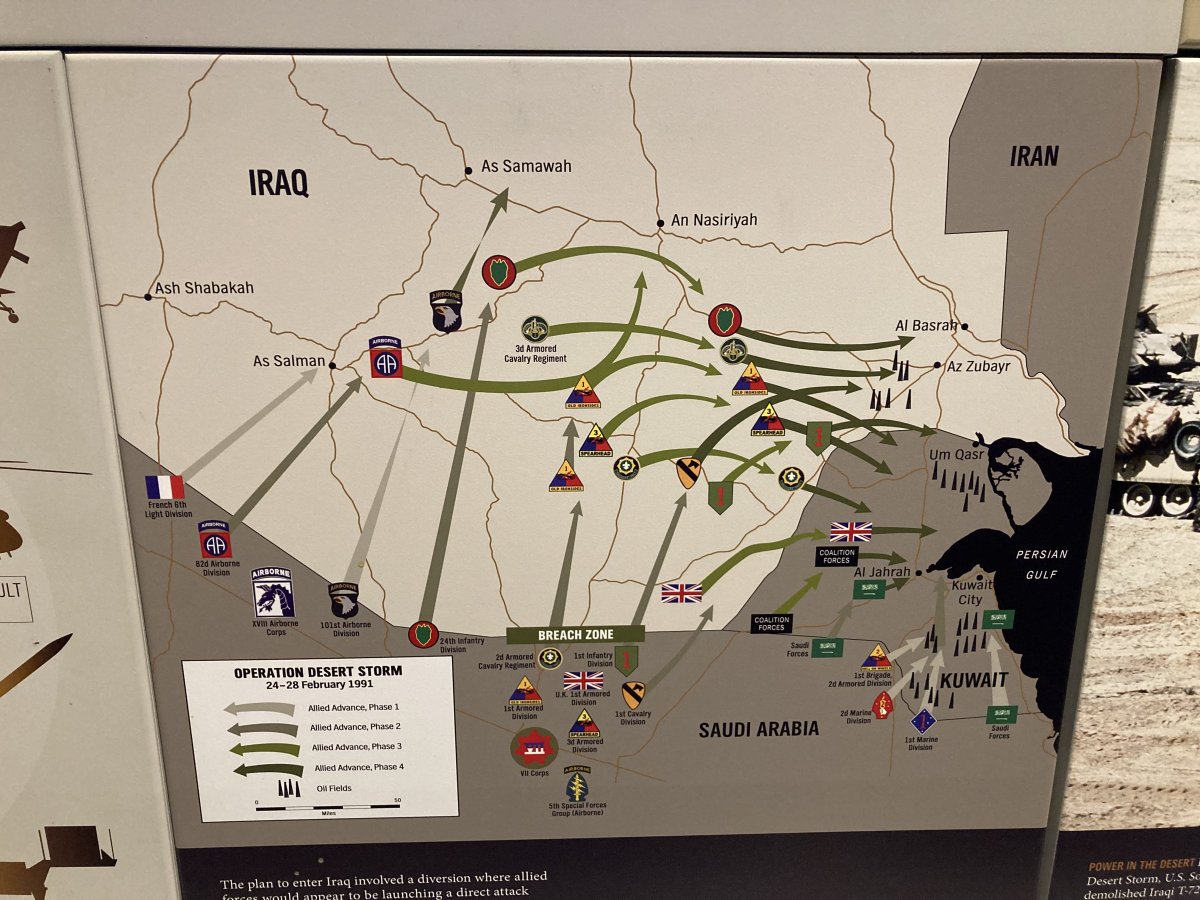
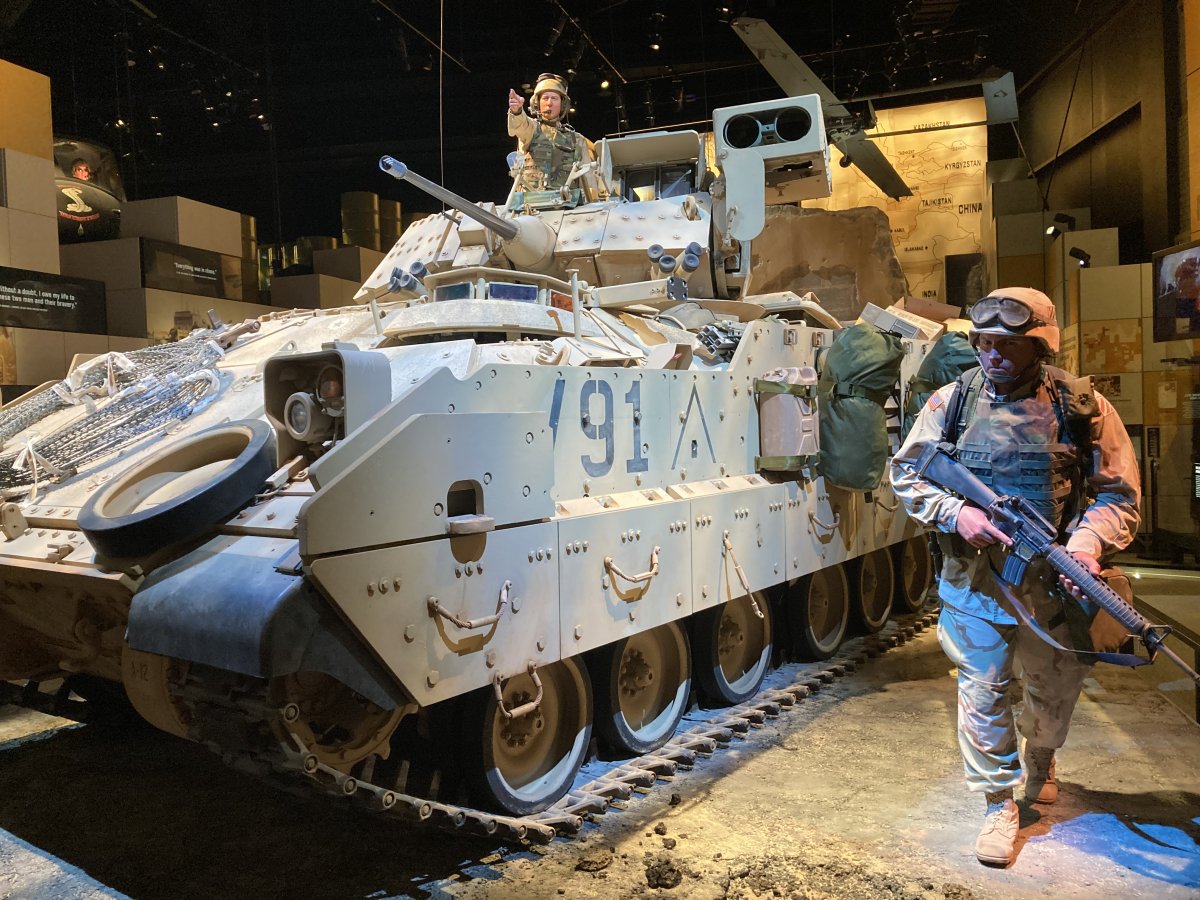
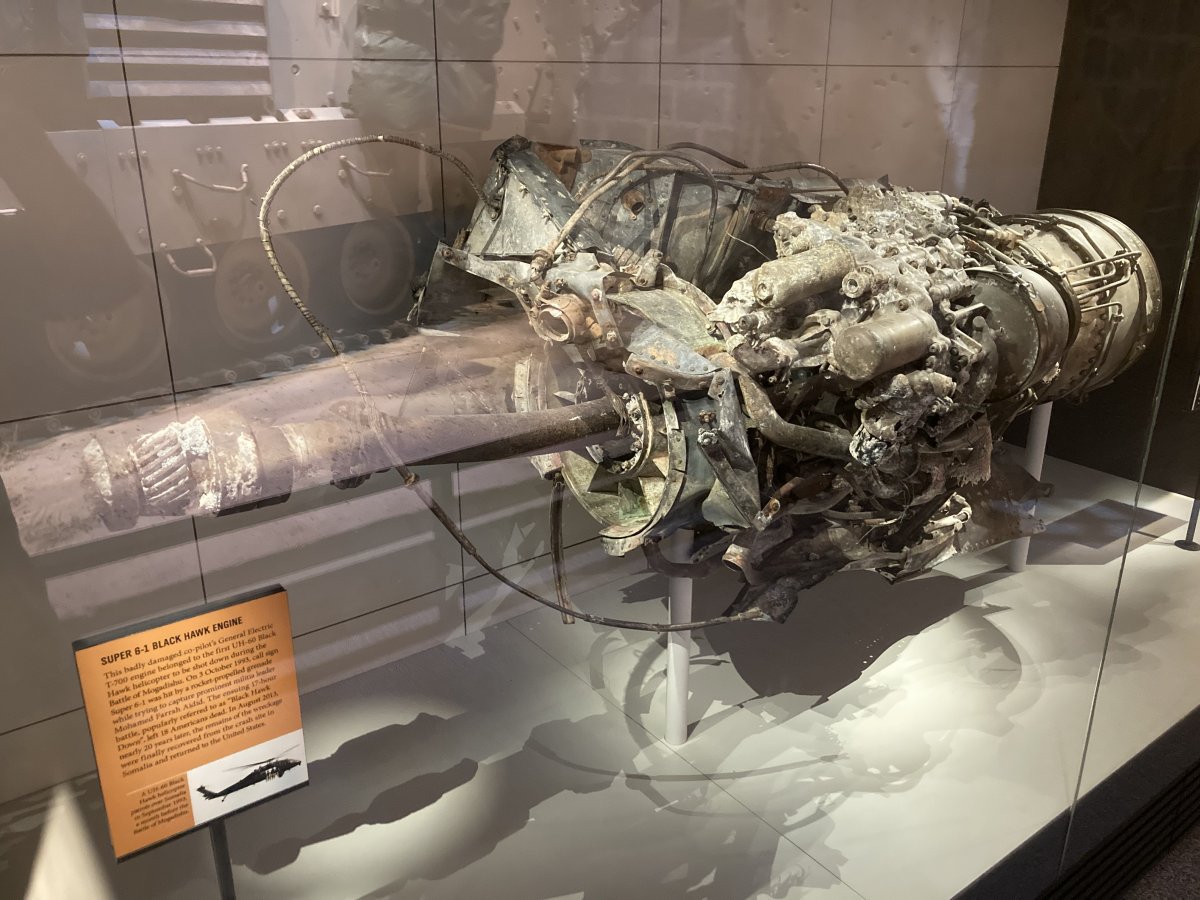
Some of the present day weapons employed by the U.S. Army. Top to bottom: semi-automatic sniper rifle, M-20 shotgun, HK-416 assault rifle, Beretta M9 semi-automatic pistol, M249 squad automatic weapon, AT4 anti-tank missile, 50-cal machine gun.
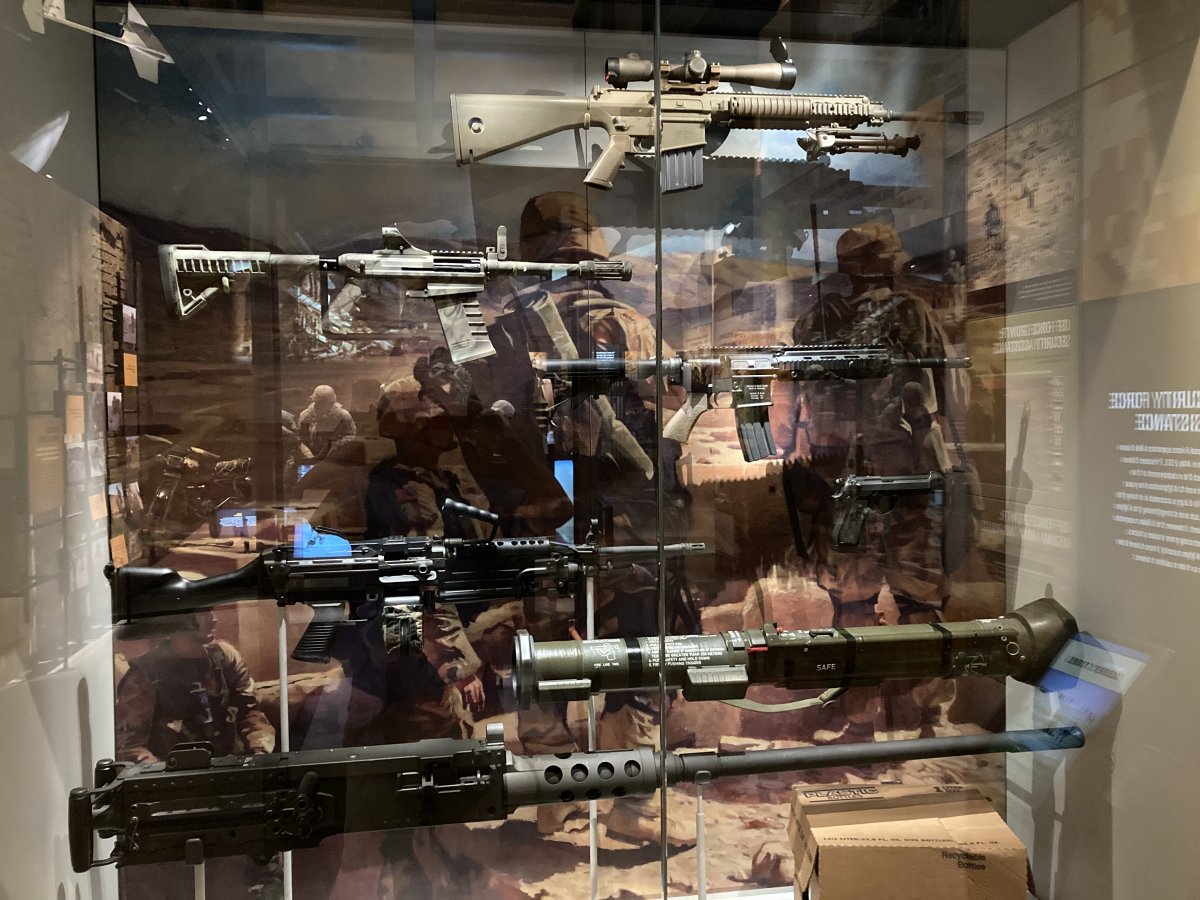
A combat squad conducting an early morning raid in Iraq, 2010.
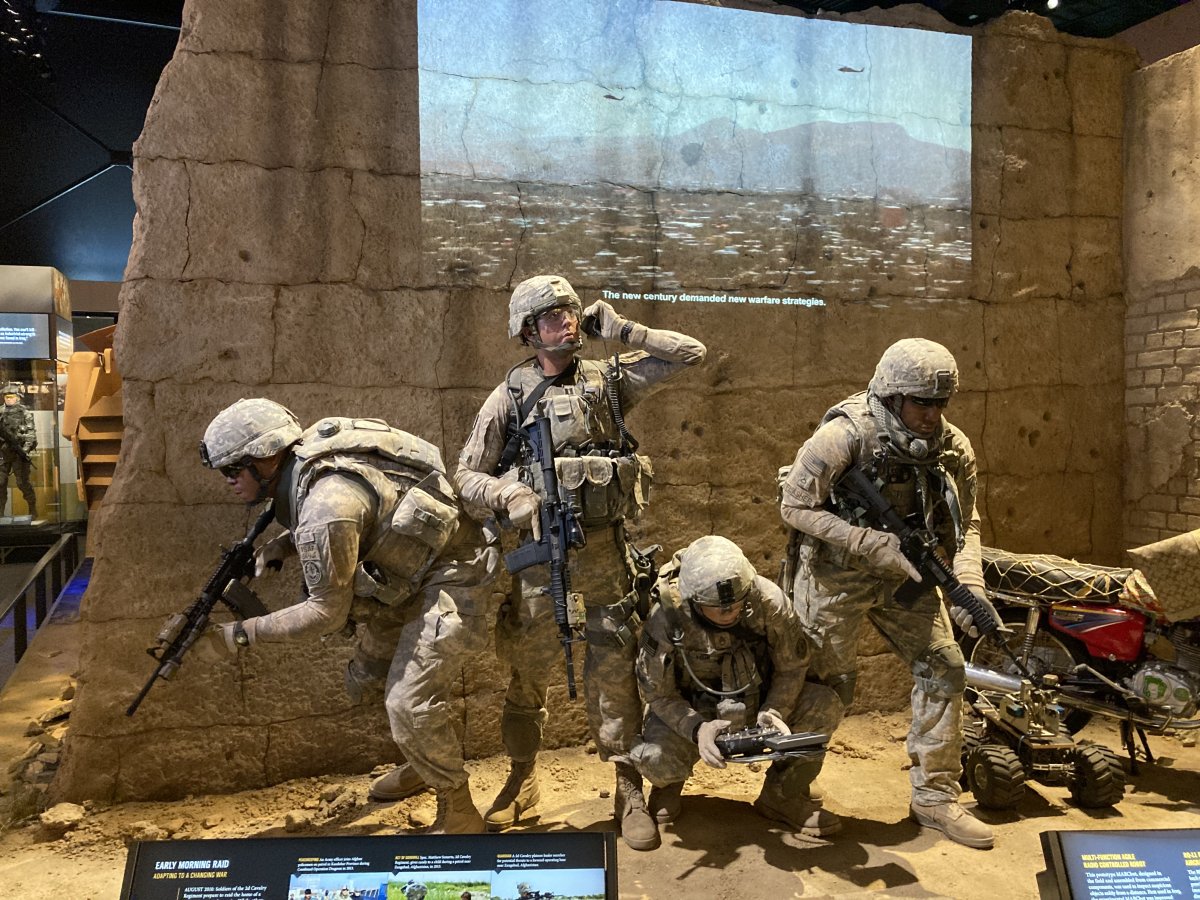
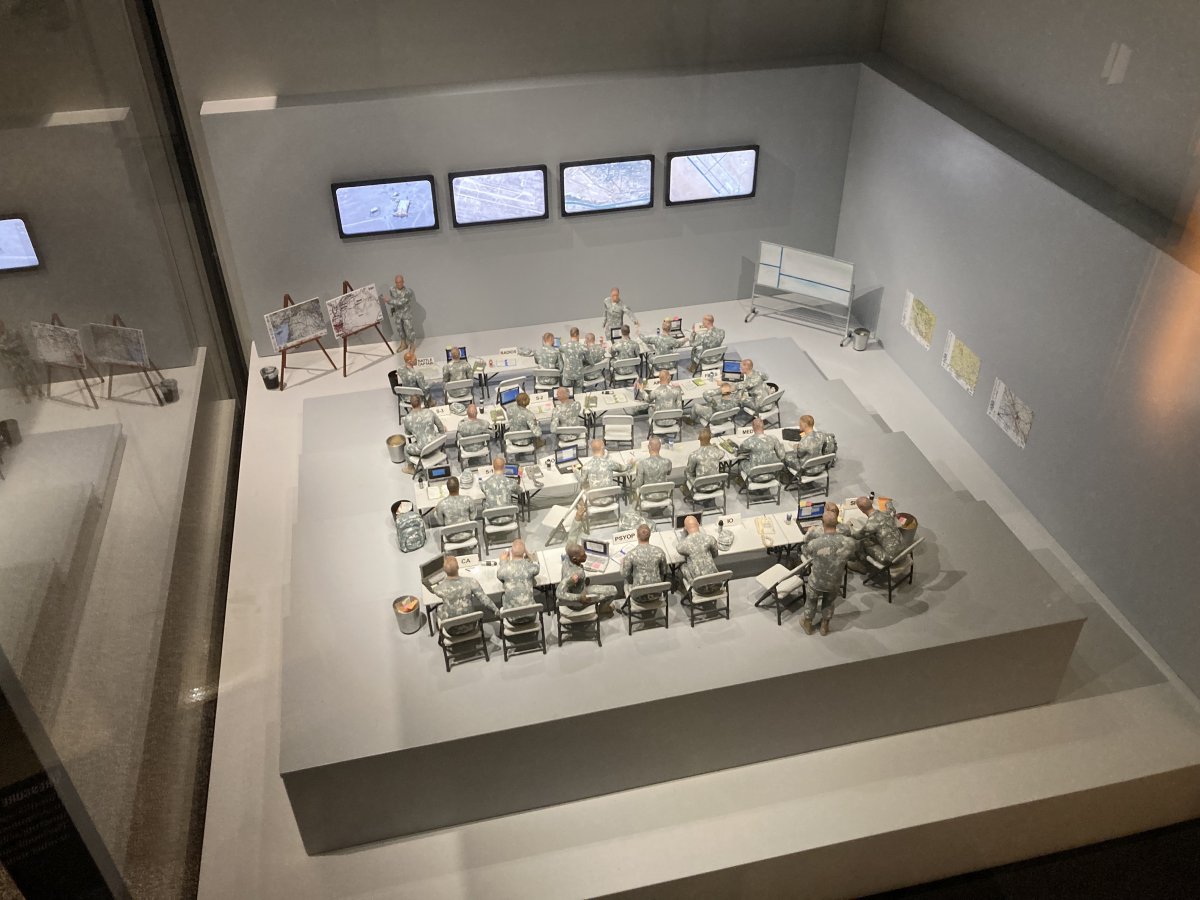
At center, the primary infantry weapon of the U.S. Army: the M4 carbine, designed to receive numerous attachments.
